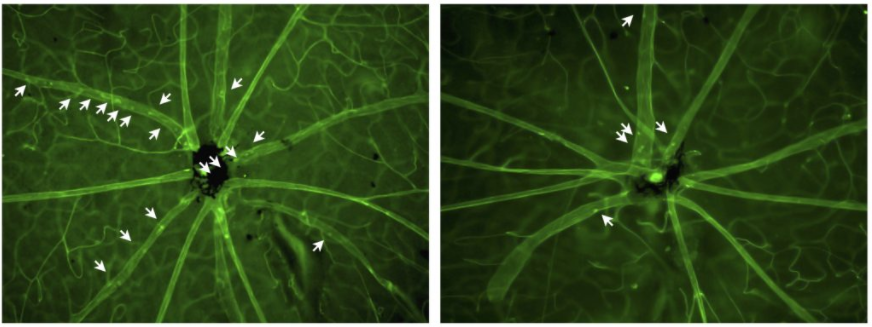Researchers in Japan have developed a new uveitis and diabetic retinopathy treatment candidate using RNA interference (RNAi) to target the receptor-associated prorenin system (RAPS), a pathway shown to mediate inflammation and angiogenesis within the eye.
The novel single-stranded RNAi agent, called a proline-modified short hairpin RNA (PshRNA), suppresses expression of the prorenin receptor [(P)RR] genes, thus preventing activation of RAPS.
The team created the PshRNA after observing that prorenin and a soluble form of the (P)RR were significantly upregulated in the vitreous fluid of patients with uveitis compared to normal controls. In their study published in Molecular Therapy: Nucleic Acids, the authors also noted a positive relationship between increased intraocular levels of a soluble form of the (pro)renin receptor and monocyte chemotactic protein-1, a known inflammatory mediator in uveitis as well as in diabetic retinopathy.
Because the (P)RR gene sequence is the same in humans and mice, the team’s initial in vitro studies evaluated the knockdown efficacy of the PshRNA on cell lines from both species. They found the agent successfully inhibited (P)RR protein expression without interfering with mRNA transcript for off-target genes.
Subsequent in vivo studies in mice showed that intravitreal injection of the (P)RR-PshRNA significantly reduced ocular inflammation in models of acute uveitis and chronic diabetic inflammation, with no apparent side effects.
"Our findings suggest significant involvement of the (pro)renin receptor in human uveitis, as well as the potential use of the PshRNA agent to reduce ocular inflammation," says Atsuhiro Kanda.
Although no immune response was seen in the mice at the current effective dose, the authors state the need for investigations of dose-escalating immunogenicity. If animal model studies prove successful, drugs targeting RAPS may benefit patients with uveitis, diabetic retinopathy and other inflammatory vascular disorders involving the body’s renin-angiotensin system.
 The number of leukocytes (arrows) in the inflamed vasculature was significantly reduced in the RNA-treated retina (right) compared to the control (left) of diabetic mice with chronic inflammation. (Kanda A. et al., Molecular Therapy: Nucleic Acid, January 12, 2017)
The number of leukocytes (arrows) in the inflamed vasculature was significantly reduced in the RNA-treated retina (right) compared to the control (left) of diabetic mice with chronic inflammation. (Kanda A. et al., Molecular Therapy: Nucleic Acid, January 12, 2017)